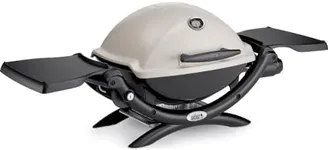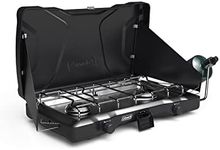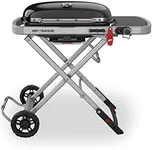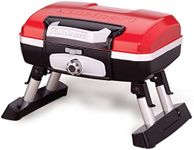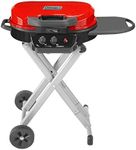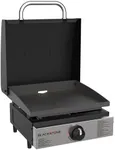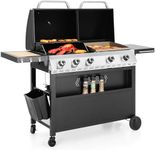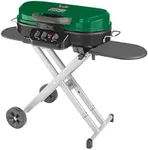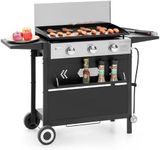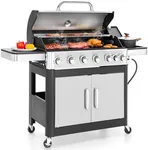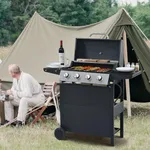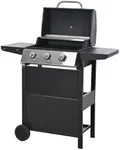Buying Guide for the Best Camping Grills
Choosing the right camping grill can significantly enhance your outdoor cooking experience. When selecting a camping grill, it's important to consider various factors that will meet your specific needs and preferences. Think about the type of food you plan to cook, the number of people you will be serving, and the portability of the grill. Here are some key specifications to consider when picking the best camping grill for you.Fuel TypeThe fuel type of a camping grill determines how it is powered and can affect convenience and cooking performance. Common fuel types include propane, charcoal, and wood. Propane grills are easy to use and heat up quickly, making them ideal for quick meals. Charcoal grills provide a traditional smoky flavor and are great for those who enjoy the process of grilling. Wood grills offer a unique flavor but require more effort to manage. Choose a fuel type based on your cooking style and the level of convenience you desire.
PortabilityPortability is crucial for a camping grill, as you need to transport it to your campsite. This spec includes the grill's weight, size, and ease of assembly. Lightweight and compact grills are easier to carry and store, making them suitable for backpacking or car camping. Larger grills may offer more cooking space but can be cumbersome to transport. Consider how you will be traveling and the space available in your vehicle when selecting a portable grill.
Cooking Surface AreaThe cooking surface area determines how much food you can cook at once. This is measured in square inches. Smaller grills with a cooking surface of around 100-200 square inches are suitable for solo campers or small groups. Medium-sized grills with 200-400 square inches can accommodate families or small gatherings. Larger grills with over 400 square inches are ideal for big groups or those who like to cook multiple items simultaneously. Choose a cooking surface area based on the number of people you plan to cook for and the types of meals you want to prepare.
Heat OutputHeat output, measured in BTUs (British Thermal Units), indicates the grill's heating power. Higher BTUs mean more heat and faster cooking times. For small grills, 5,000-10,000 BTUs are usually sufficient. Medium grills may require 10,000-20,000 BTUs, while larger grills might need 20,000 BTUs or more. Consider the types of food you will be cooking and how quickly you want to prepare meals when evaluating heat output. Higher heat output is beneficial for searing meats, while lower heat is suitable for slow cooking and delicate foods.
DurabilityDurability refers to the grill's ability to withstand outdoor conditions and frequent use. Look for grills made from high-quality materials such as stainless steel, cast iron, or coated aluminum. These materials resist rust and wear, ensuring a longer lifespan. Consider the build quality and read reviews to gauge the grill's durability. If you plan to use the grill frequently or in harsh conditions, investing in a more durable model will be beneficial.
Ease of CleaningEase of cleaning is an important factor, as it affects the maintenance and longevity of your grill. Features like removable grates, drip trays, and non-stick surfaces can make cleaning easier. Grills with fewer parts and smooth surfaces are generally simpler to clean. Consider how much time you are willing to spend on cleaning and choose a grill that offers convenient cleaning features. This will help you keep your grill in good condition and ready for your next camping trip.
